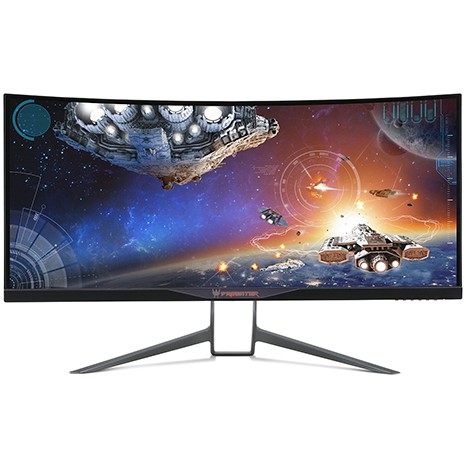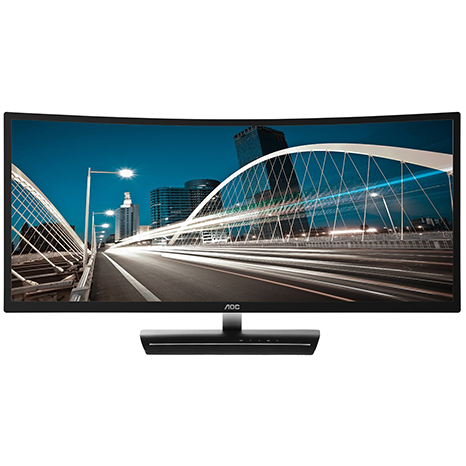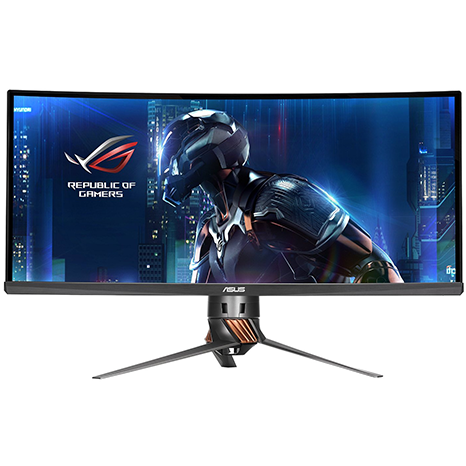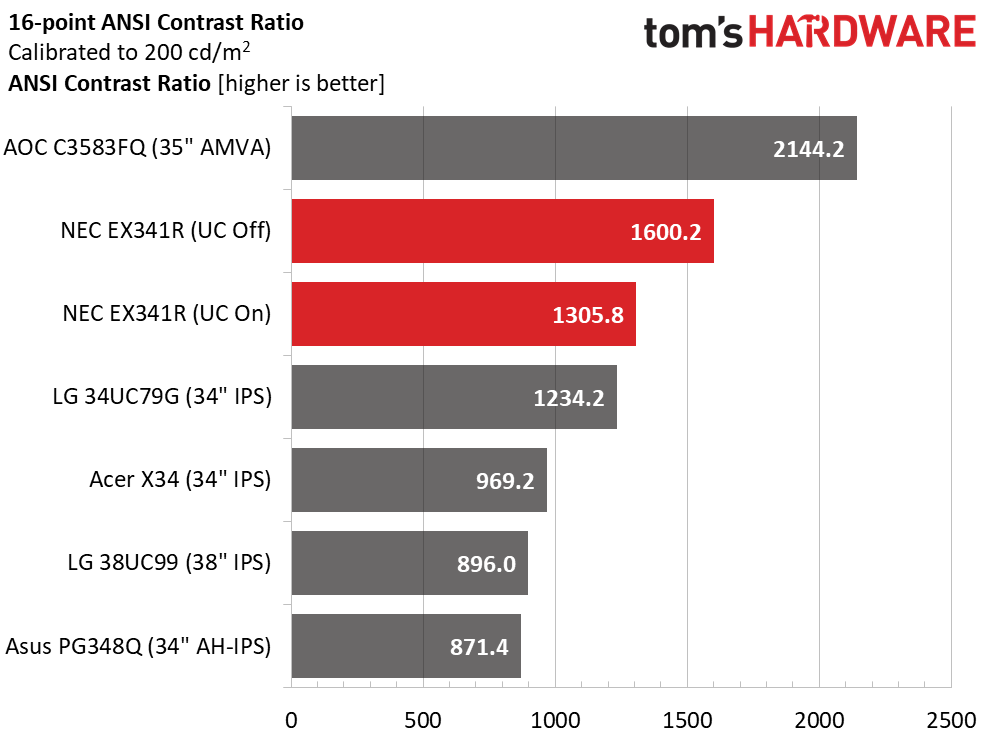NEC EX341R Monitor Review
Why you can trust Tom's Hardware
Brightness & Contrast
To read about our monitor tests in depth, please check out Display Testing Explained: How We Test Monitors and TVs. Brightness and Contrast testing is covered on page two.
Uncalibrated – Maximum Backlight Level
Today’s group is all curved ultra-wide monitors, but due to the nature of the market, all except the NEC are gamer-focused. They feature things like adaptive-sync, fast refresh, and blur-reduction. But comparisons in the areas of color and contrast are fair across genre dividing lines. We have AOC’s C3583FQ, LG’s 38UC99 and 34UC97G, Asus PG248Q and Acer’s Predator X34.
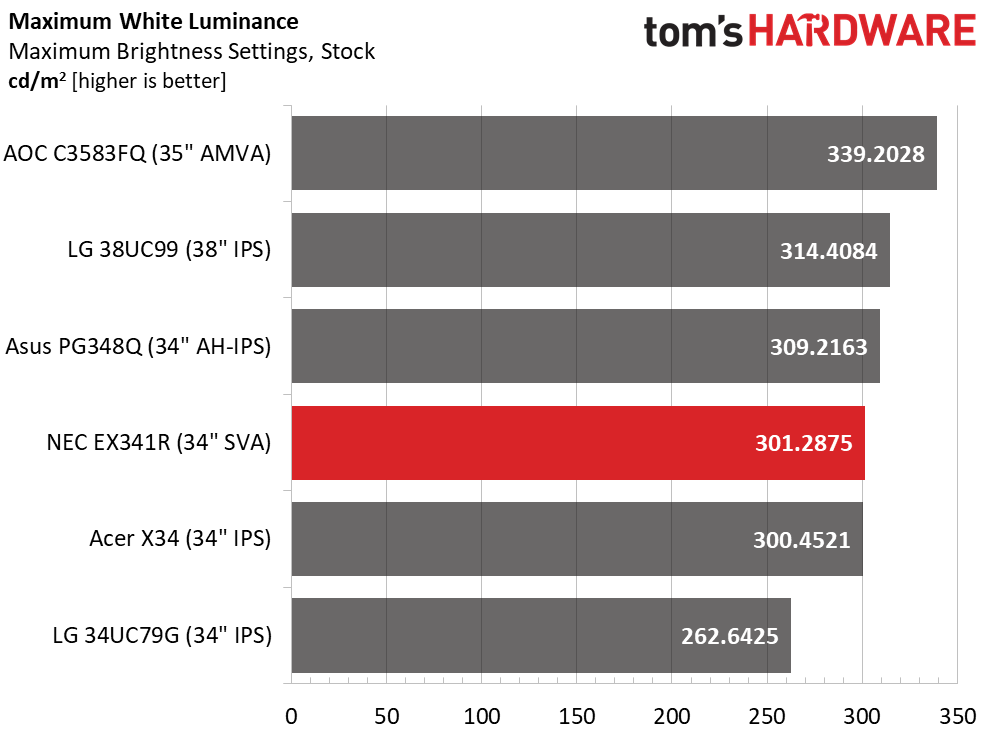
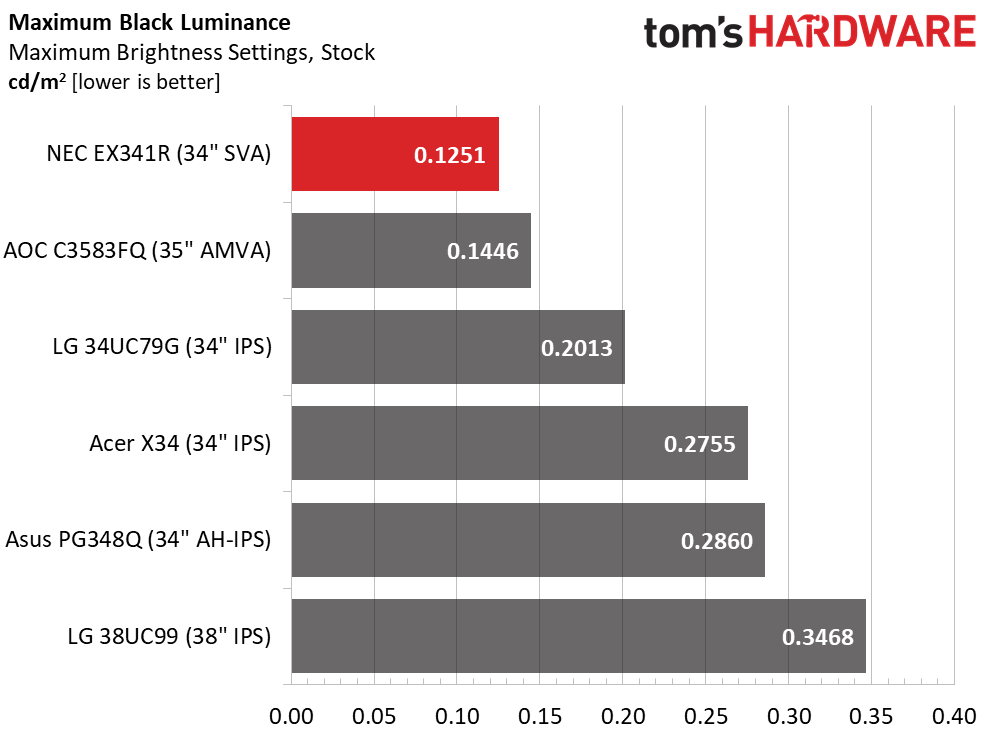
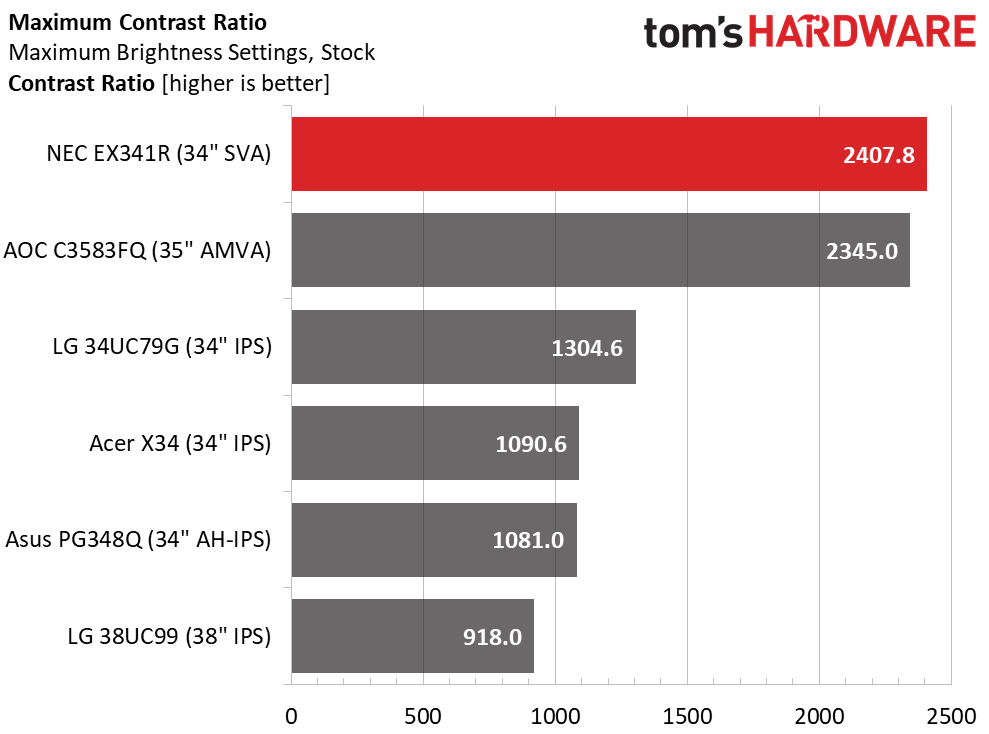
NEC never over-claims brightness levels and the EX341R is no exception. It beats its spec of 290cd/m2 by 11. Curved ultra-wides typically have less output than their flat, 16:9 counterparts, which is not surprising. The problem arises when manufacturers include blur reduction or uniformity compensation. Extra light is needed to compensate for those output-robbing technologies.
Thanks to its SVA panel, black levels are the lowest of the group. The C3583FQ comes in second by virtue of its brighter backlight, but NEC still manages to take the contrast win. A .1251 black level is excellent performance.
Uncalibrated – Minimum Backlight Level
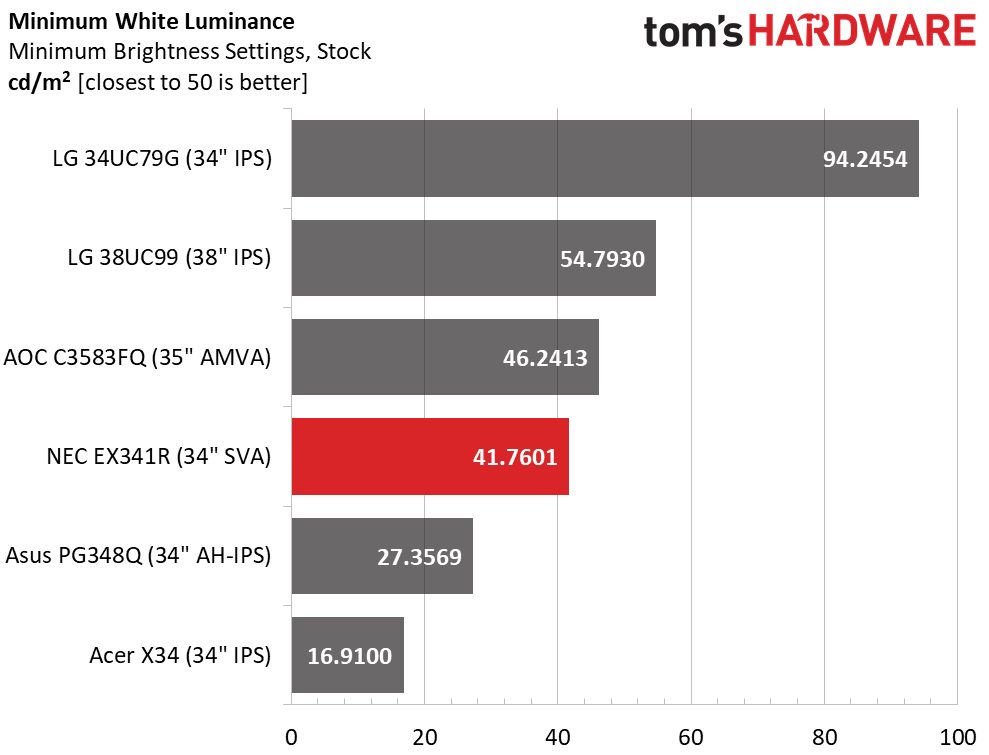
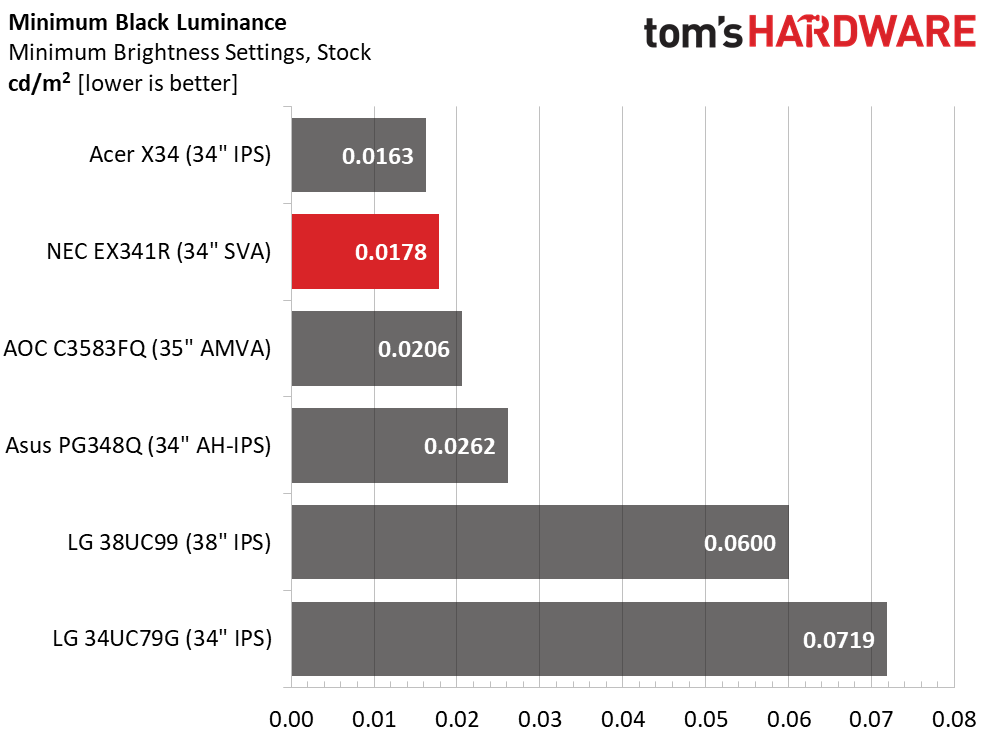
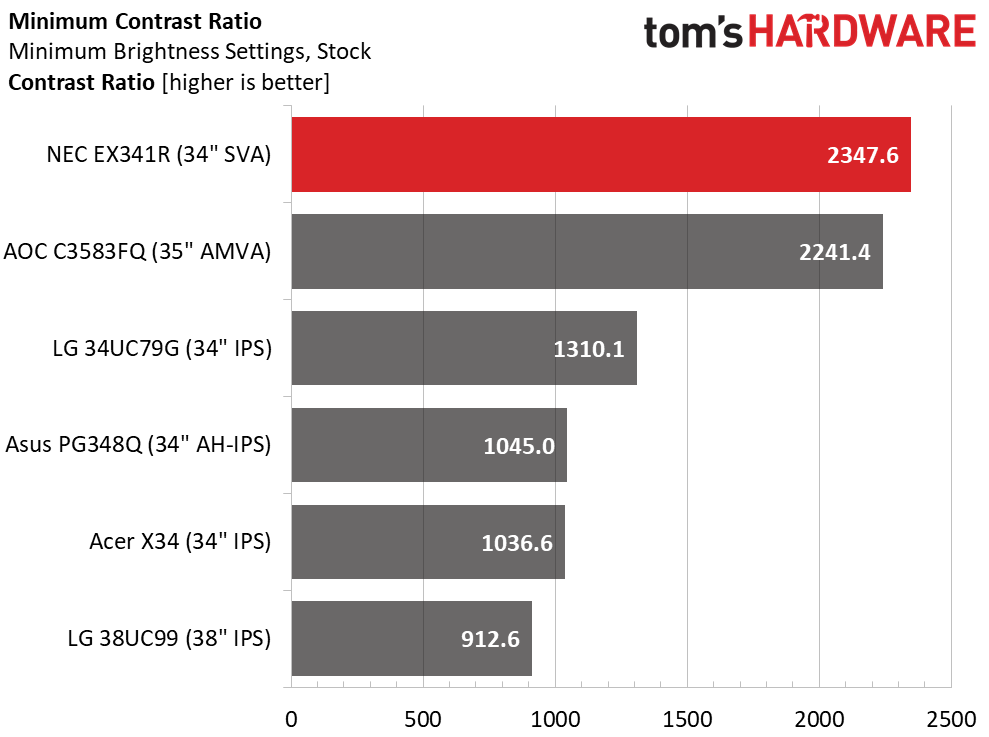
The last few NEC monitors we reviewed came with more useful minimum backlight levels than their predecessors. We used to see numbers below 10cd/m2 which has no practical value. 41.7601cd/m2 is a tad lower than 50 but still usable in a completely dark room. The extra screen real estate makes up for that somewhat. The Acer X34 sneaks up to the top of the black level test because its backlight goes down to a ridiculous 16.91cd/m2.
After Calibration to 200cd/m2
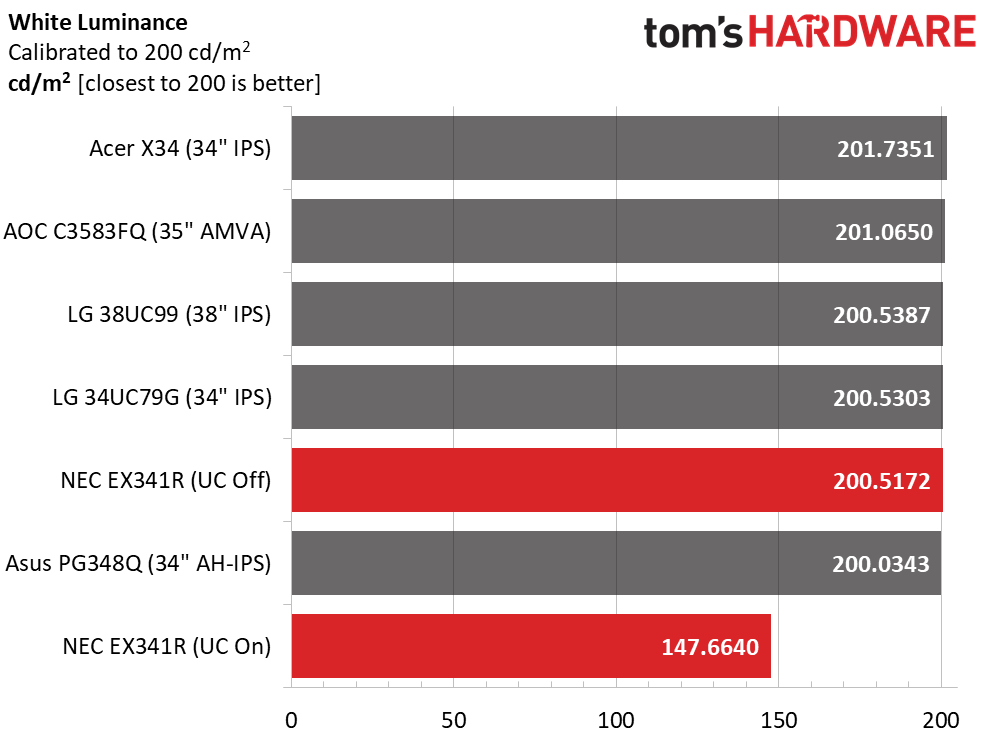
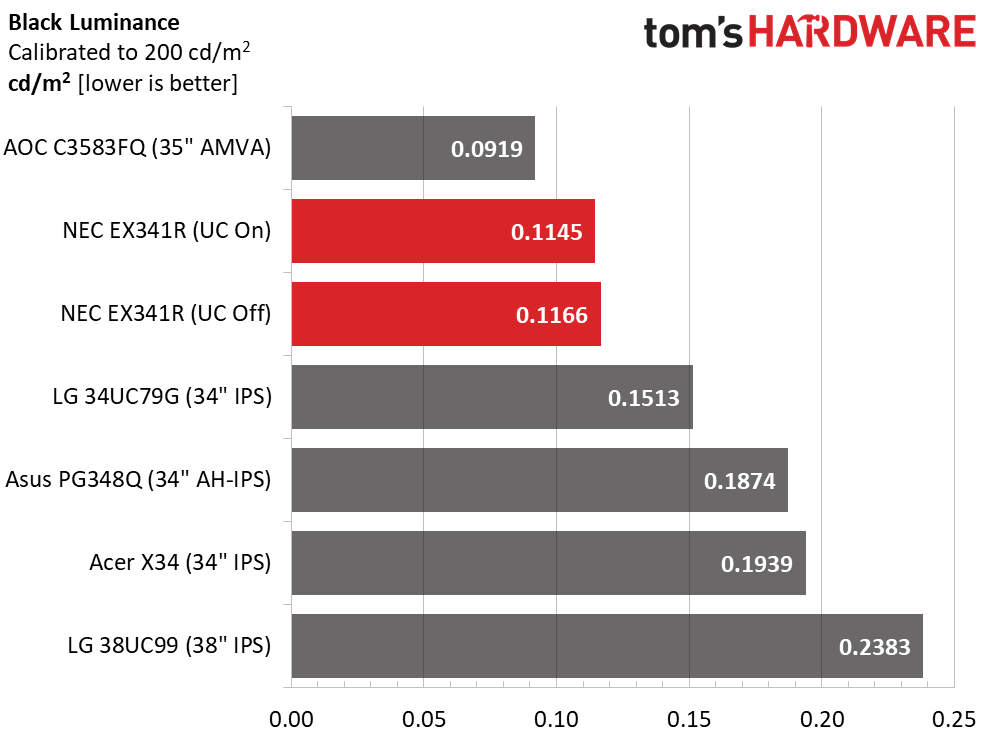
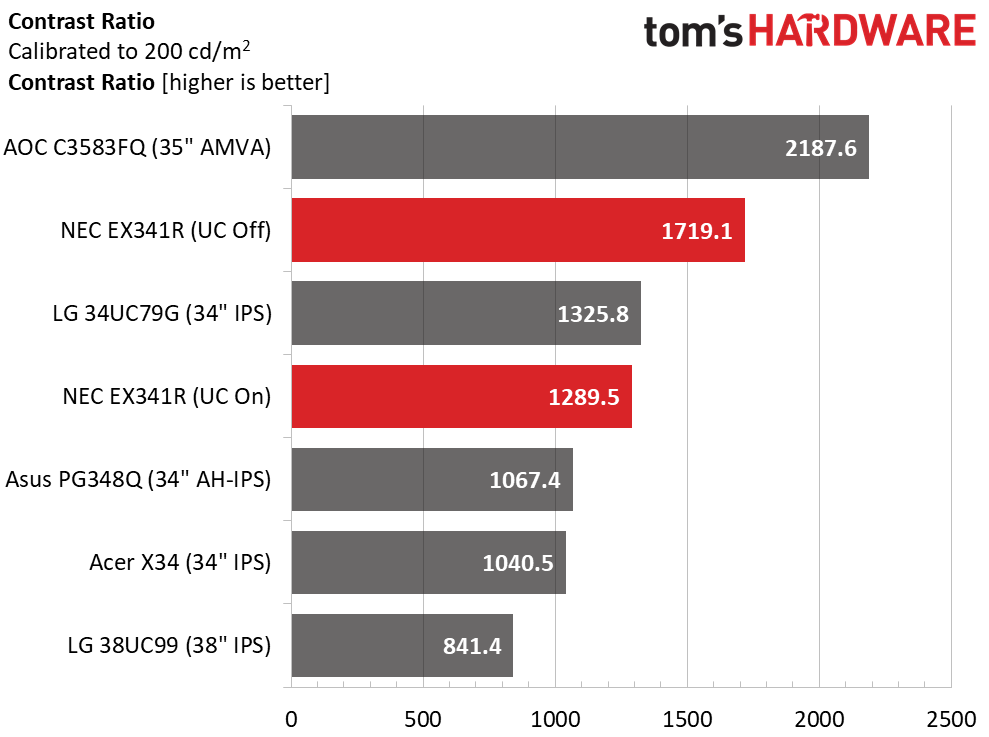
Here you can see how NEC has engineered its uniformity compensation feature. Most of the adjustment happens at the bright end of the scale which results in a reasonable 26% reduction in output. Since there is contrast to spare, image quality holds up well at 1289.5 with uni-comp turned on. Our uniformity tests show that there is little need for the feature in our sample’s case, but it’s good to see some contrast headroom that allows it to be usable.
ANSI Contrast Ratio
ANSI contrast is a bit lower than the sequential number, which is usual. And again, we can see that contrast headroom allows uni-comp to do its thing without harming image depth. This is the reason we should all be clamoring for VA panels. That extra contrast does wonders for picture quality. It makes color look more saturated and helps detail pop without the need for edge enhancement.
Get Tom's Hardware's best news and in-depth reviews, straight to your inbox.
MORE: Best Gaming Monitors
MORE: Best Professional Monitors
MORE: How We Test Monitors
MORE: How To Choose A Monitor
MORE: All Monitor Content
Current page: Brightness & Contrast
Prev Page OSD Setup & Calibration Next Page Grayscale, Gamma & Color
Christian Eberle is a Contributing Editor for Tom's Hardware US. He's a veteran reviewer of A/V equipment, specializing in monitors. Christian began his obsession with tech when he built his first PC in 1991, a 286 running DOS 3.0 at a blazing 12MHz. In 2006, he undertook training from the Imaging Science Foundation in video calibration and testing and thus started a passion for precise imaging that persists to this day. He is also a professional musician with a degree from the New England Conservatory as a classical bassoonist which he used to good effect as a performer with the West Point Army Band from 1987 to 2013. He enjoys watching movies and listening to high-end audio in his custom-built home theater and can be seen riding trails near his home on a race-ready ICE VTX recumbent trike. Christian enjoys the endless summer in Florida where he lives with his wife and Chihuahua and plays with orchestras around the state.
-
lhughey I'm a big fan of these 21:9 monitors. its a huge productivity conventional ratios, and I prefer it over dual monitors. I'm now wanting a larger monitor like a 38" or 42" monitor with slightly higher resolution to keep up with the size increase.Reply -
DJWarpen Expensive as hell :/ I bought Crossover's QHD 2560x1440 32inch 10Bit 75hz for little over 400 with VAT from korea.... And this display has Zero backlight bleed and not even one dead pixel... and colors are amazing!Reply -
C 64 I really like the 21:9 format and the size, but why curved ???Reply
If I liked something good and curved I would have bought a banana.... -
Novell SysOp fire phasers 5 time Why would these be used in a work "enterprise" environment? That's professional work and they would not want cheap azz monitors. They buy true 10-bit panels, not 8 or 8+FRC, and they use Quadro cards that can output 10-bit color. Geforce cannot do that. And I don't buy any monitor that is not 100% Adobe RGB. None of this 99% crap.Reply -
Dantte This monitor is a joke, right? For $100 more you could get a OMEN X35; slightly bigger, faster refresh, faster pixel response, MUCH lower input lag, and g-sync amongst other superior specs; so why would someone even consider this?Reply
You call this a "business" display, no "professional." Here's what I look for in a "business" display, cheap and does it get the job done, this display is not cheap and as far as "getting the job done" there is a ton of options out there for less, consider the Samsung C34F791. As for a "professional" display, this falls flat on its face for performance and should not even be considered! -
ESCAP0 This monitor IS a joke. 75hz refresh rate? Where the F do they think we live, the Stone Ages? ;-) If you are going to drop $1k you need at minimum 100-144hz that is 100% Adobe RGB with preferably an IPS Panel. Not his POS.Reply -
Brian_227 Amazon has an LG 32 inch for $199 right now. It has none of the features this thing does and a lower resolution, but the price is so ridiculously low.Reply -
delta5 Seems to me this monitor falls between two classes and is missing key features for both. Business class the key feature of cost verse competitors.Reply
